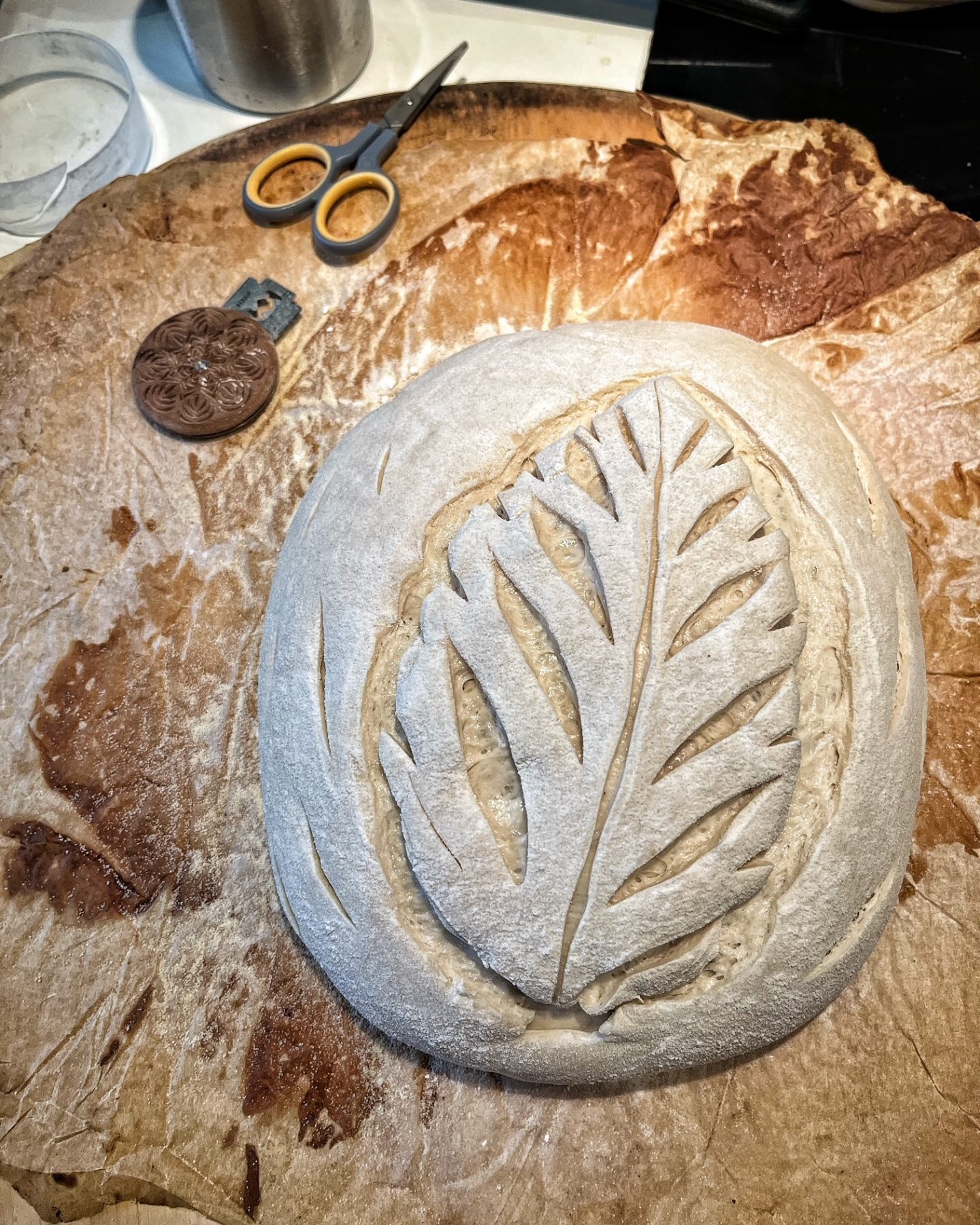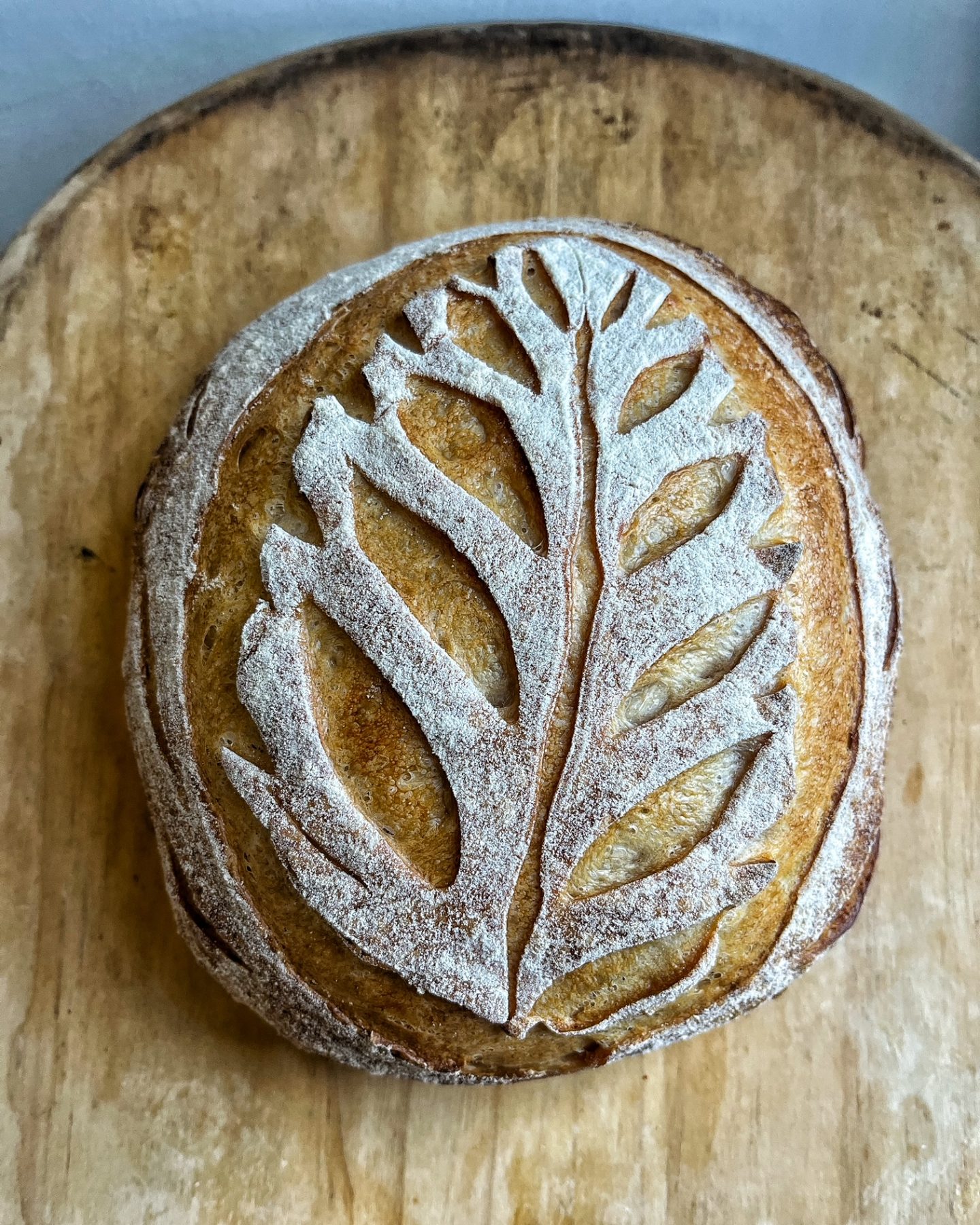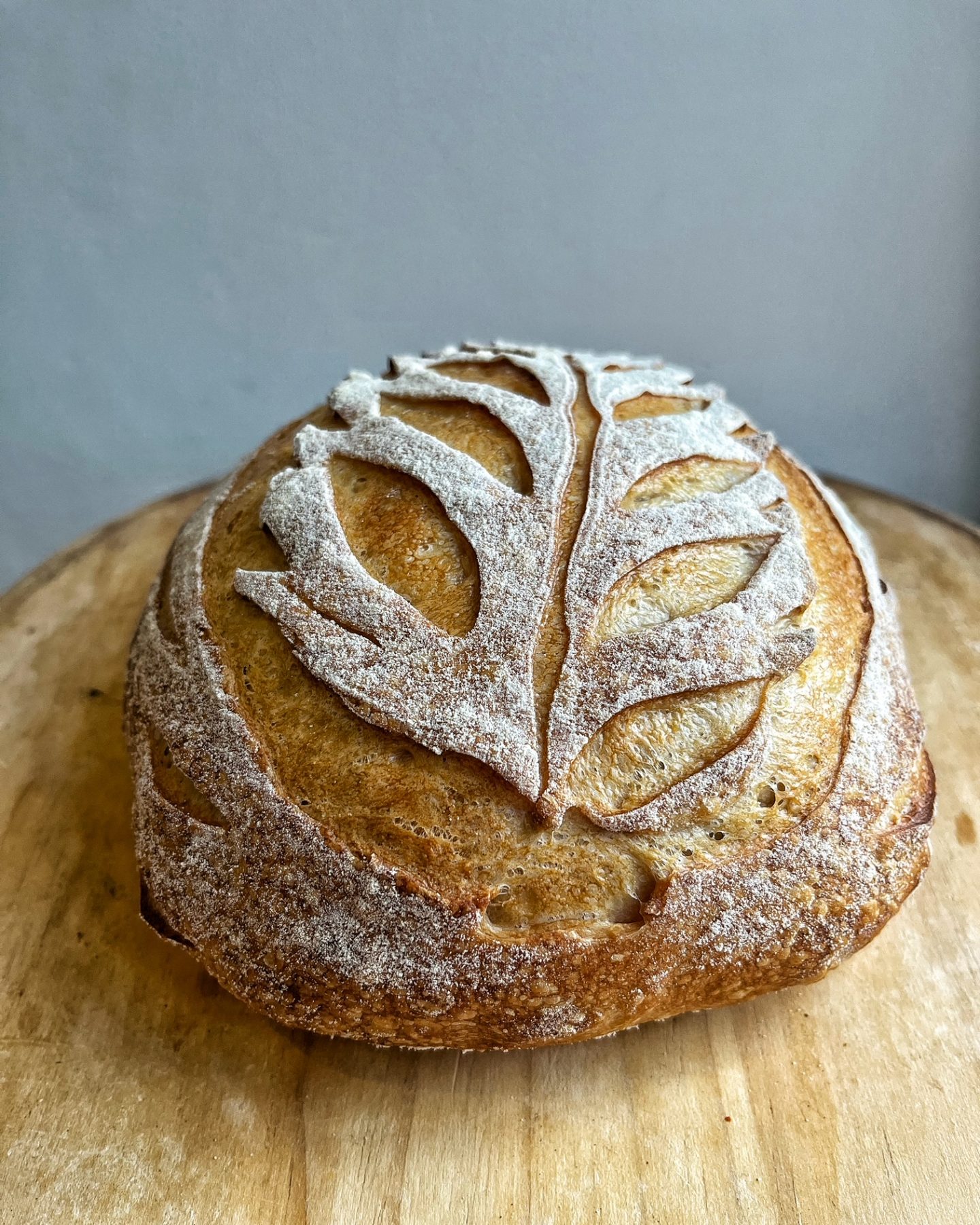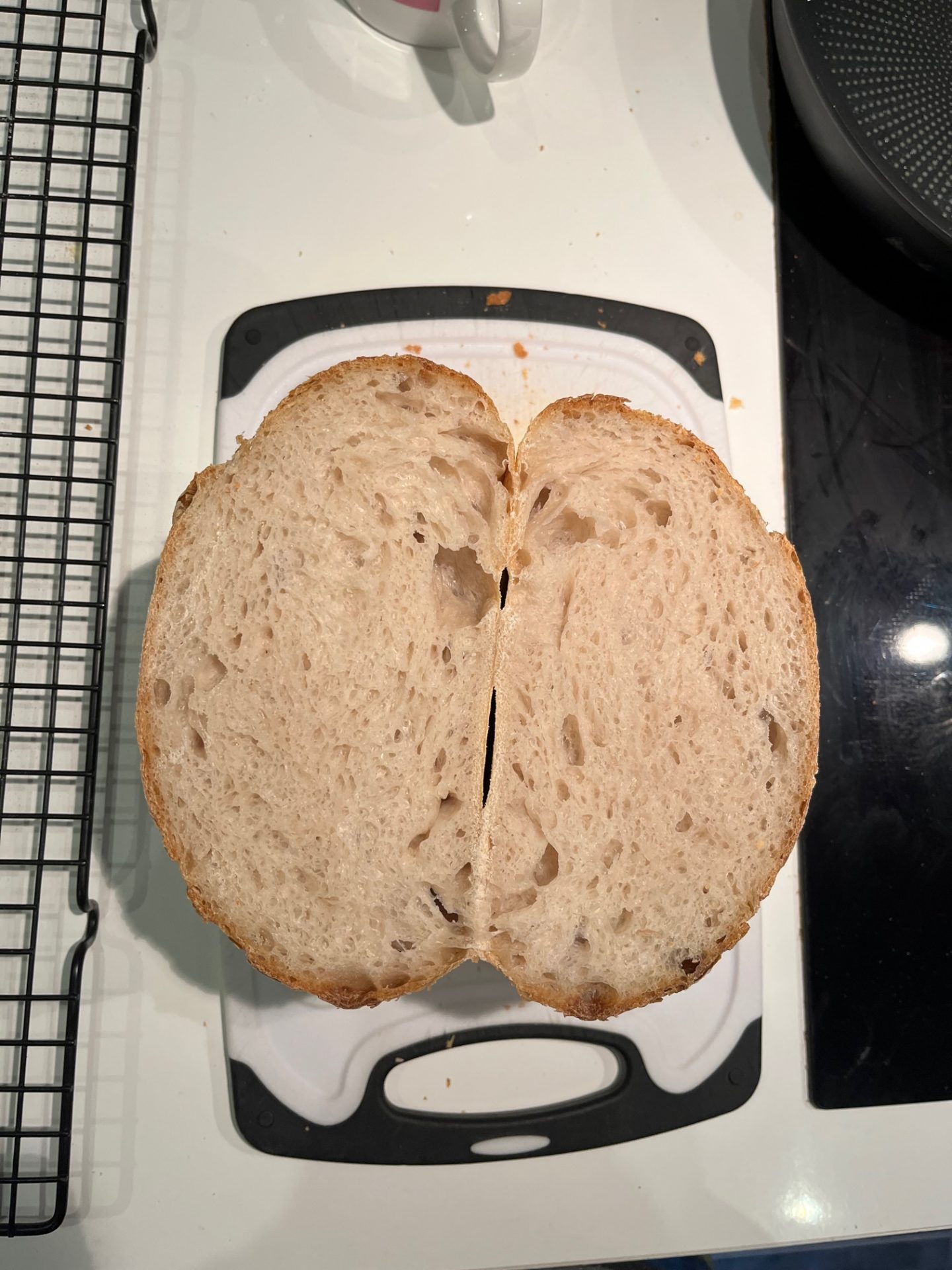In other news: I’ve finally gotten my sourdough starter sorted. For some reason, when I read instructions saying discard half of the starter every time you feed it, I didn’t clock — or maybe I got it right but I’ve just gleaned this from people I follow on Instagram — that a good feed is 1:1:1. As in, one part starter to one part flour to one part water.
I was doing 2:1:1. That didn’t seem to be a problem in the summer. But in recent months, I was getting bread that didn’t rise properly. Which feels like such a tragedy, as with any type of baking, when you put in all that time and the result is lackluster.
Stop the presses: 1:1:1 is working great. As is using a digital room thermometer to track inside-oven temperature. I read an online recommendation to put the starter in the cold oven, pour boiling water into a glass bowl, then close it up. That maybe made things too hot — I checked it an hour later and it was around 34º Celsius, when high 20s is apparently more preferred.
Regardless, the starter turned out lovely, rising to at least twice its starting volume. Based on what I’ve read, there’s not necessarily a magic time for when to use starter, though a lot of people wait for its rise to peak then try to leap in. I suspect there’s a lot more wiggle room than that.
But the results speak for themselves: The dough was pillowy and amazing to work with. It had nice bubbles after the first couple of coil folds. After I shaped it and put it into the refrigerator overnight, it rose substantially and looked right. Scoring it was relatively easy, though that could be because I finally changed the razor blade in my lame, which I should probably do with greater frequency.
But the end result — the loaf of sourdough — was superb. Much less sour taste than loaves made with lackluster starter. Nice crumb. Here’s to small successes.



